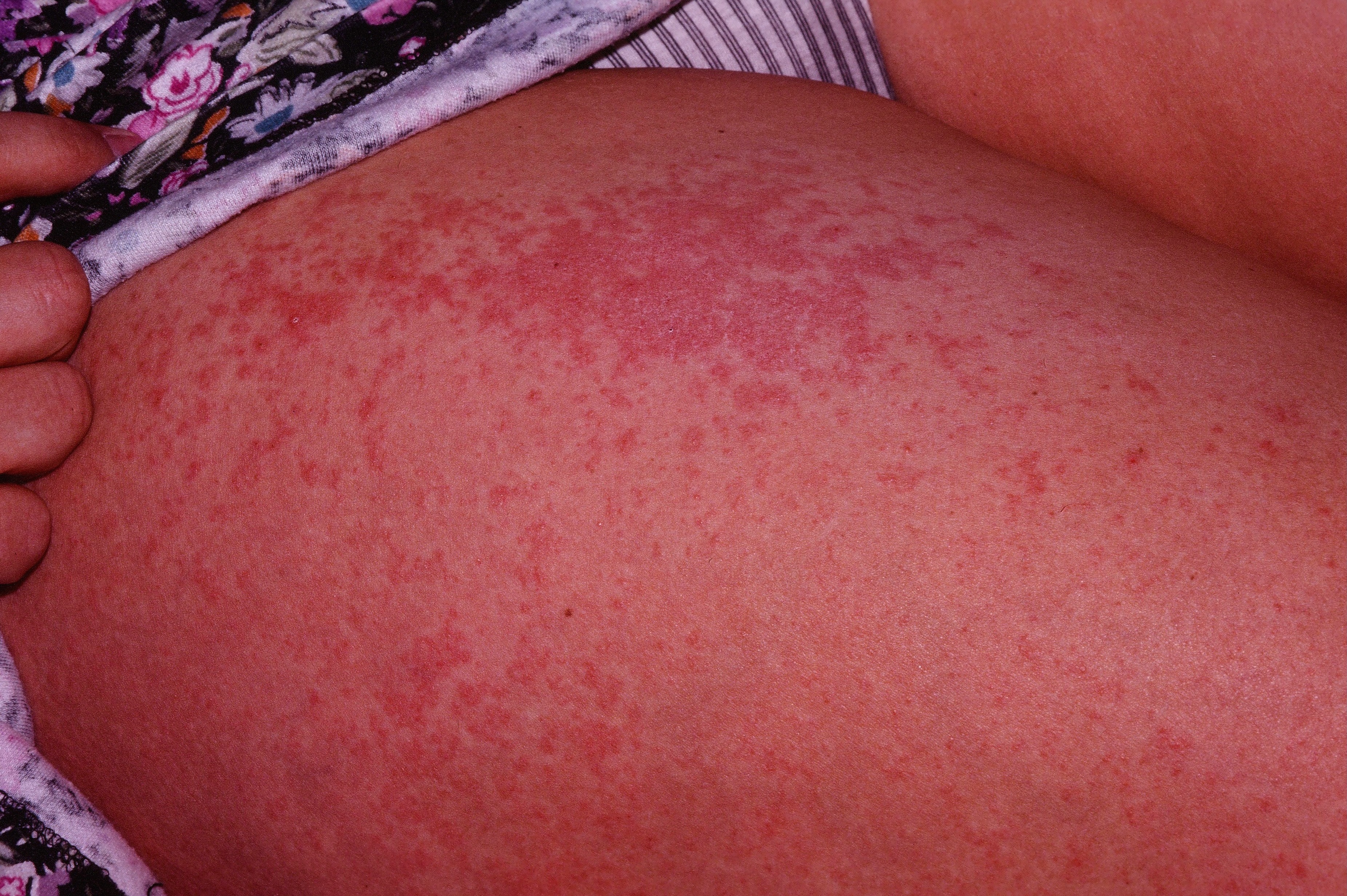
Pruritic urticarial papules and plaques of pregnancy (PUPPP), also known as polymorphic eruption of pregnancy, is a not uncommon itchy urticarial rash of pregnancy. In one intriguing report, fetal DNA was found in the skin of a series of mothers suffering from PUPPP. Alternatively, it has been theorized that the stretching of maternal skin somehow exposes or damages cutaneous antigens resulting in immune system attack.
PUPPP occurs principally in primigravidas in the third trimester. Male fetus and twinning or triplets are associated. Urticarial, papular and polycyclic lesions classically begin in the abdominal stria but then may spread to the trunk, arms, thighs and buttocks. Involvement above the breasts is uncommon. Initial lesions are urticarial but about one-half of the patients later develop polymorphous features including erythema, vesicles, targetoid and/or eczematous changes. The lesions are usually very pruritic.
PUPPP does not routinely flare postpartum as does pemphigoid gestationis (PG) but it can rarely have it's onset in the post menopausal period. PUPPP has no tendency to recur in subsequent pregnancies. Maternal-fetal weight gain and the incidence of twins appears to be increased, but there is no increased fetal morbidity or mortality. In cases where PG is is a consideration, direct immunoflourescence (DIF) is positive in PG but negative in PUPPP. Alternatively CD4 immunohistochemistry of Formalin fixed tissue is positive in PG and negative in PUPPP.

A close-up of the edematous, erythematous stria.

This woman was having triplets!
Homepage | Who is Dr. White? | Privacy Policy | FAQs | Use of Images | Contact Dr. White